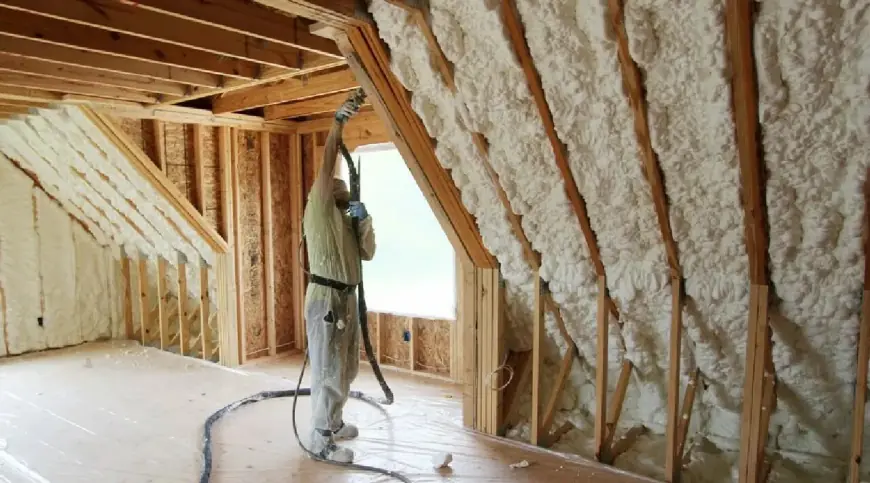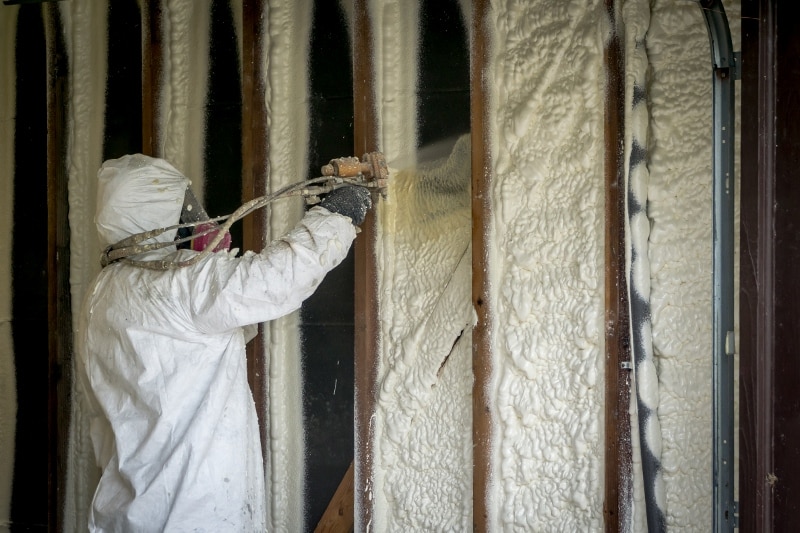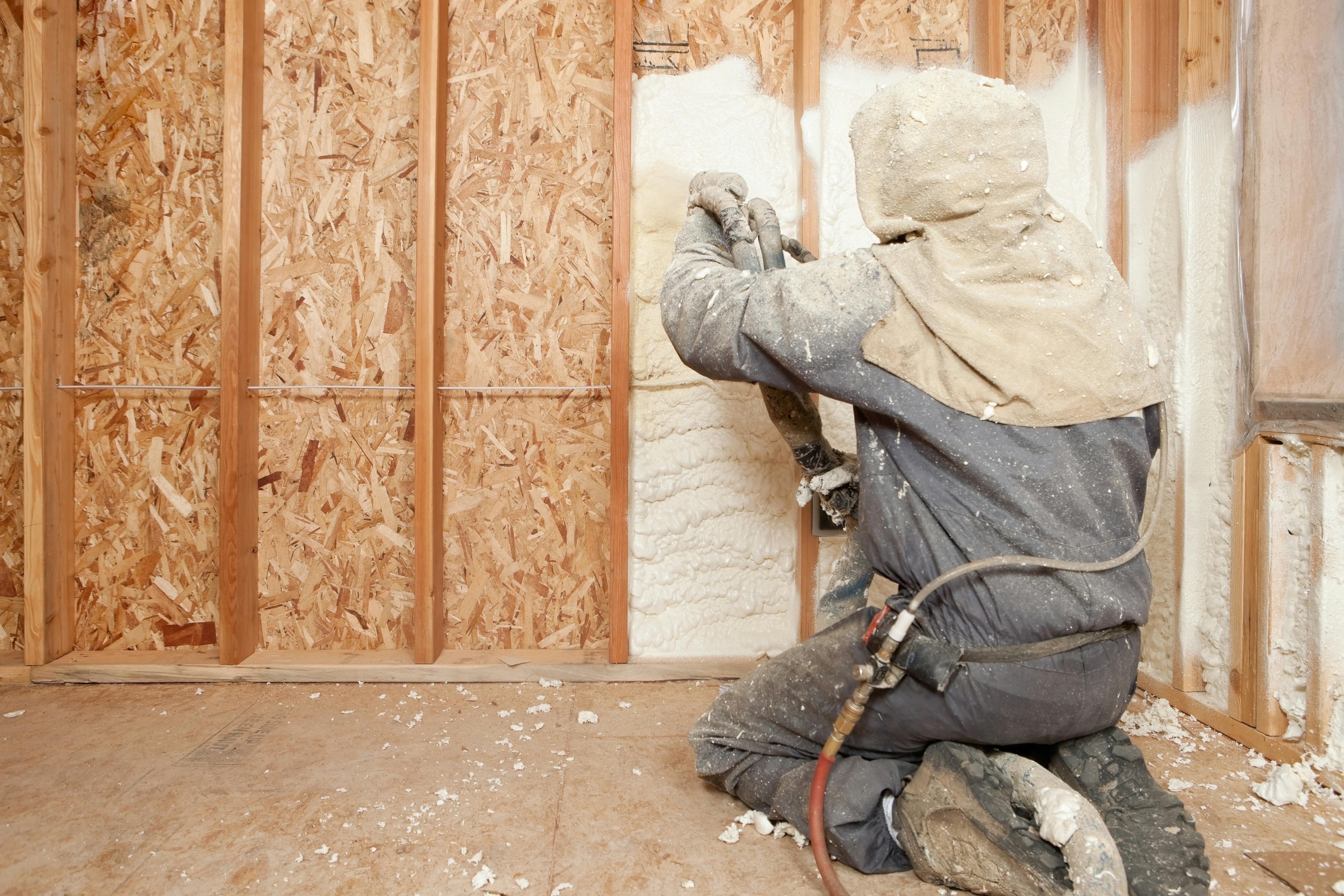DIY Guide: How to Apply Open-Cell Spray Foam Insulation Like a Pro

Applying open-cell spray foam insulation is a practical way to improve energy efficiency in residential and commercial buildings. For property owners looking to handle the installation themselves, knowing the correct method is critical for safety, performance, and long-term results. This guide outlines the process with practical steps, safety information, and key technical details.
Understand the Role of Open-Cell Spray Foam
Open-cell spray foam expands quickly, filling gaps, cracks, and cavities with a soft, flexible material. It's most effective in interior applications where air sealing is the priority, but not where moisture barriers are needed.
Differences Between Open-Cell and Closed-Cell Foam
Open-cell foam is lightweight and allows vapor to pass through, while closed-cell foam is denser and forms a rigid barrier.
|
Feature |
Open-Cell Foam |
Closed-Cell Foam |
|---|---|---|
|
Expansion Rate |
High |
Moderate |
|
Water Resistance |
Low |
High |
|
Sound Dampening |
High |
Medium |
|
Air Sealing |
Excellent |
Excellent |
|
Vapor Barrier |
No |
Yes |
|
Typical Use |
Interior walls, attics |
Basements, exterior walls |
|
Cost per Board Foot |
Lower |
Higher |
Best Places to Use Open-Cell Foam
Use open-cell spray foam for:
-
Attics and roof decks (where moisture is managed separately)
-
Interior walls needing sound absorption
-
Crawl spaces with conditioned air systems
-
Ceilings between levels for noise control
Avoid using it in:
-
Basements with potential moisture exposure
-
Exterior walls where a vapor barrier is necessary
Prepare for a Safe DIY Application
Before starting, take precautions to protect your health and ensure consistent results. Proper equipment, planning, and workspace setup are critical.
Safety Gear to Use
-
Full-face respirator or mask rated for organic vapors
-
Protective suit with hood and gloves
-
Ventilation system or exhaust fans to keep air moving
-
Safety glasses if the full respirator is not available
Workspace Preparation
-
Clear all combustible items and flammable materials
-
Cover nearby surfaces with plastic sheeting
-
Maintain consistent indoor temperatures (ideally 60–80°F)
-
Use temporary partitions if spraying near occupied spaces
Choose the Right Spray Foam Kit
DIY spray kits are widely available and include two pressurized tanks, hoses, and a spray gun. Check that your kit is labeled for open-cell foam and includes enough board feet to cover your planned area.
Evaluate Kit Features
-
Coverage estimate: match the square footage to your job
-
Expansion rate: verify it’s suitable for wall cavity depth
-
Curing time: faster sets may limit error correction
-
Reusability: some kits allow for multiple sessions
Apply the Foam in Measured Passes
To ensure effective insulation and avoid overapplication, apply spray foam in consistent layers. The typical maximum thickness per pass is 2 inches.
Step-by-Step Application Process
Step 1: Shake and Warm the Tanks
Store tanks in a warm area the day before. Shake thoroughly to ensure chemical mixing. Cold chemicals can cause uneven spray and poor adhesion.
Step 2: Test the Spray Pattern
Spray a small amount on cardboard to check for a uniform fan. If it's uneven or lumpy, adjust the nozzle or replace the tip.
Step 3: Begin Spraying
Start at the bottom of the wall cavity and move up in a steady vertical path. Overlap slightly with each pass to avoid gaps.
-
Keep nozzle 12–18 inches from the surface
-
Spray in 2-inch passes, allowing expansion
-
Wait 10–15 minutes between layers
Step 4: Inspect and Trim
Once cured, use a serrated blade or insulation saw to trim any foam that protrudes past the studs or intended depth.
Monitor Temperature and Humidity Conditions
Open-cell spray foam is sensitive to temperature and moisture during application. Improper environmental conditions can lead to sagging, separation, or poor adhesion.
Key Environmental Requirements
-
Surface temperature: between 60°F and 90°F
-
Humidity: under 60% RH during spray time
-
Substrate condition: dry and free from oil or dust
Common Issues from Poor Conditions
-
Foam pulls away from the framing: surface too cold
-
Soft, spongy texture: high humidity or chemical imbalance
-
Incomplete expansion: blocked nozzles or improper mixing
Post-Installation Inspection and Curing
Once the spray foam sets, inspect all cavities to confirm even coverage. Look for voids, shallow areas, or inconsistent texture.
Curing Guidelines
-
Tack-free in about 1 minute
-
Fully cured in 8–24 hours
-
Do not install drywall or other barriers until fully cured
Cleanup Recommendations
-
Dispose of tanks according to local regulations
-
Let used equipment cure, then discard it
-
Ventilate the area for at least 24 hours before re-entry
Common Questions about DIY Open-Cell Spray Foam
How many inches of spray foam do I need for walls?
Two inches of open-cell foam usually provides adequate air sealing for interior walls. Some applications may require additional layers for soundproofing or insulation.
What happens if I spray foam too thick?
If too thick in one pass, the foam may not cure properly, causing it to sag, shrink, or remain tacky. Always apply in layers no thicker than 2 inches.
Can I use open-cell foam in a bathroom?
Not recommended unless moisture control is already addressed. Open-cell foam allows vapor movement, which can lead to mold in high-humidity areas.
Is DIY spray foam as effective as professional installs?
If applied correctly, open-cell DIY kits can achieve comparable performance to professional jobs in small to mid-sized projects. Proper technique and safety adherence are key.
How do I know if the foam cured properly?
Fully cured foam should feel firm to the touch, hold its shape when pressed, and show no signs of tackiness. If it's soft or smells strongly after 24 hours, it may not have cured fully.
Conclusion
Applying open-cell spray foam insulation is a manageable task for motivated DIYers. It offers excellent air sealing, noise reduction, and energy benefits when installed correctly. However, for those unsure about the process or seeking optimal results, hiring an experienced open-cell spray foam insulation contractor can ensure proper preparation, safety adherence, and flawless application.
Use thin layers, maintain proper temperatures, and take your time with curing. Post-install inspection is just as important as the initial spray. With attention to detail and safe practices, DIY spray foam can yield long-lasting insulation value in both residential and commercial properties.
FAQs
Can I use open-cell spray foam on exterior walls?
Only if there's a separate vapor barrier in place. Open-cell foam doesn’t resist moisture well and isn’t suitable for exterior-facing surfaces without added protection.
Do I need a license to apply spray foam insulation?
For personal, non-commercial use, no license is needed. Commercial projects may require permits or certified installers depending on local building codes.
How long does open-cell spray foam last?
When applied correctly, it can last the lifetime of the structure. It doesn’t settle or degrade under normal indoor conditions.
Can spray foam insulation catch fire?
It’s flammable during installation. Once cured, open-cell foam should be covered with an ignition barrier, like drywall, to meet fire safety codes.
Is ventilation necessary after spraying?
Yes. Proper ventilation clears chemical fumes and ensures safe re-entry. Ventilate for at least 24 hours post-application using fans or exhaust systems.
Author: Skeeter Aimone, co-founder of High Country Solutions, develops eco-friendly products to improve sustainability in outdoor gear. Brad Morrison leads the company’s technology strategy, creating systems that enhance outdoor experiences with a focus on environmental responsibility. Established in 2018, they bring years of experience to advancing sustainable outdoor living through high-performance, responsible insulation materials.
Reviewer: Samuel Harris has worked across various roles in spray foam insulation over 11 years. His review focused on how businesses can better present their services to both new and returning clients.
What's Your Reaction?
 Like
0
Like
0
 Dislike
0
Dislike
0
 Love
0
Love
0
 Funny
0
Funny
0
 Angry
0
Angry
0
 Sad
0
Sad
0
 Wow
0
Wow
0


















































